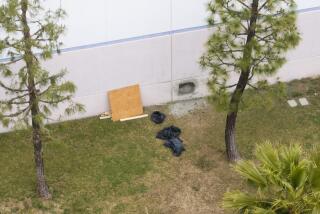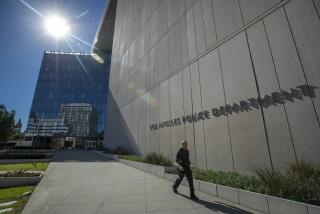At Fort Worth facility, the buck starts here
- Share via
FORT WORTH — With the holiday shopping season behind us -- and slim pickings in our wallets and checking accounts -- most of us lament the truth of one particular adage: Money doesn’t grow on trees.
Unless the prospect of a lengthy term in prison sounds attractive, we’re probably not going to sneak off to the basement or the garage to print some extra green. As much as we might like it, that’s a job we have to leave to the Money Factory.
Year in and year out, there’s never a shortage of moola here, where about 58% of America’s money is made. By the time this new year of 2012 is over, the place will have produced $139 billion of crisp, new notes. That would be enough to give a post-holiday gift of $445 to every person in the country, if distributing the wealth were that simple, which, of course, it isn’t.
As people learn during a tour of the Money Factory -- formally known as the Bureau of Engraving and Printing’s Western Currency Facility -- nearly all that cash being printed on the shop floor here and in Washington, D.C., is destined to replace worn-out bills that are withdrawn from circulation.
Getting into the sprawling Texas plant is similar to going through security at an airport, although visitors must leave most of their personal belongings -- cameras and cellphones included -- in their cars. They then go to the Transfer Station, where, under the watchful eye of members of the facility’s own police force, guests pass through metal detectors before boarding buses for the short ride to the factory.
One-hour tours begin in a theater where a film called “The Buck Starts Here” explains how money is made. Guests then pass through a vault-like door into a quarter-mile of corridors filled with thick glass windows overlooking the production floor.
“The average production equals $386 million a day,” tour guide Kim Hein said before jokingly adding: “Those folks down there can say they make $16 million an hour.”
To thwart those who might seriously contemplate making money of their own, sophisticated machinery is used in the four-month process of making a bill. (There also are several drying periods along the way.)
“You start off with the offset,” said Charlene Williams, the facility’s director. “That’s where your color is incorporated into the note. Then the intaglio printing is like the fine line, very deep engraving. If you run your finger across the engraving, you’ll feel the raised image on the note.”
Later, serial numbers and official seals are added by letterpresses.
“Bricks” of 400 new notes -- with values ranging from $4,000 for a wad of one-dollar bills to $400,000 for hundreds -- are stacked on pallets before being moved to the factory’s large vault.
A single pallet of hundreds, Hein said, is valued at $64 million. (Visitors often sigh wistfully at that amount.)
Only a select group of people knows just how much money is stored in the Fort Worth vault. The guide, however, noted that it’s designed to hold 1.4 billion bills.
Guests should allow time to visit the two floors of exhibits in the Visitor Center. The tours explain the history of the U.S. Treasury’s moneymaking, which began in 1862, and are full of delightful trivia. For example, the cotton-and-linen bills are made to withstand 4,000 creases along the same line before tearing.
Not unexpectedly, Williams and her staff are frequently asked, “Do you have any samples?”
Although the answer is, technically, “no,” Williams has a quick comeback.
“I tell people I do have a sample. It’s a shredded one,” she said with a laugh. Spoiled notes, she noted, are shredded and sold in clear plastic bags in the gift shop.
“If you can place 51% of any one note back together, send it in and redeem it,” she said. “Good luck in gluing.”
--
More to Read
Sign up for The Wild
We’ll help you find the best places to hike, bike and run, as well as the perfect silent spots for meditation and yoga.
You may occasionally receive promotional content from the Los Angeles Times.






